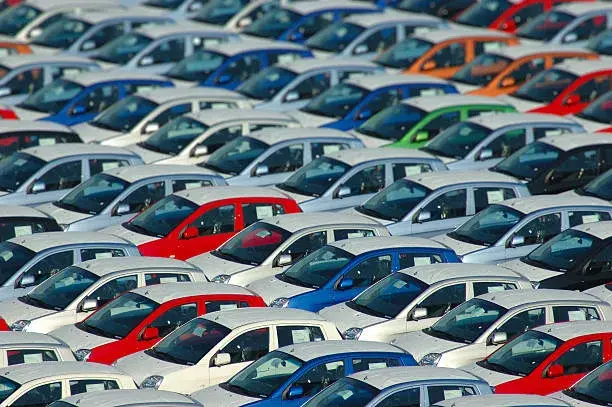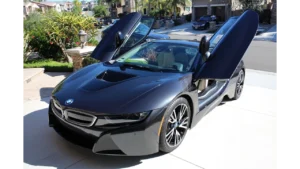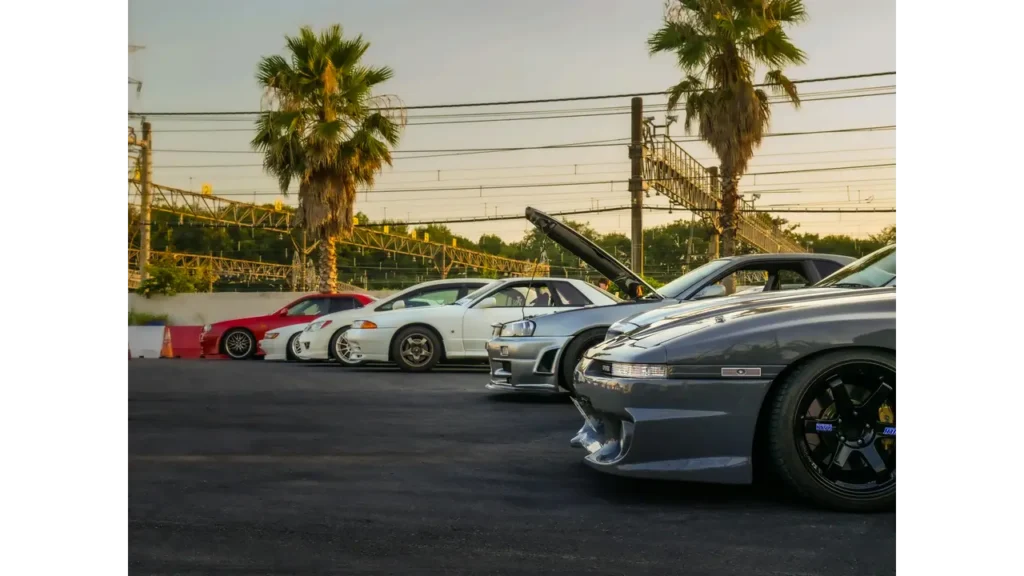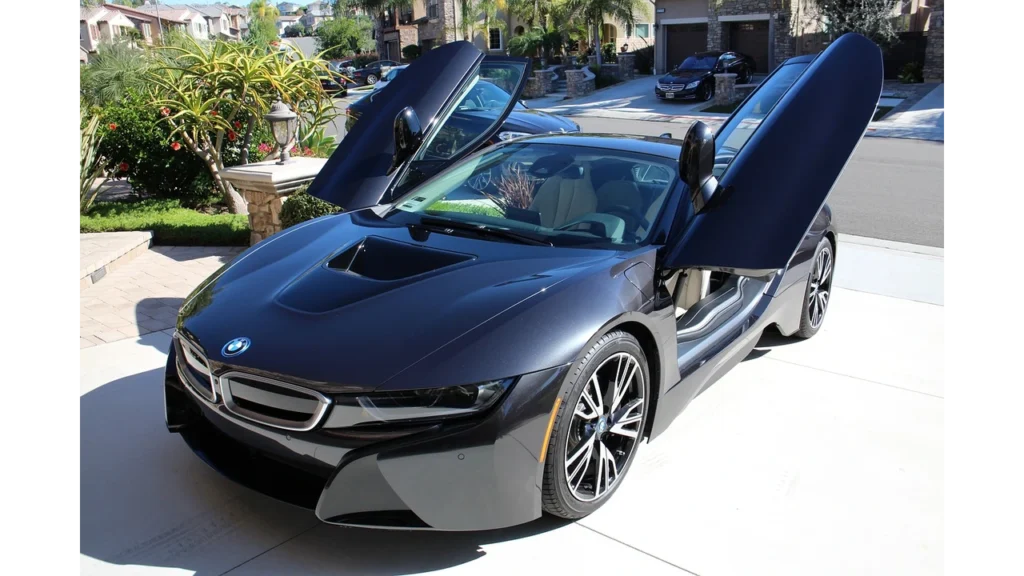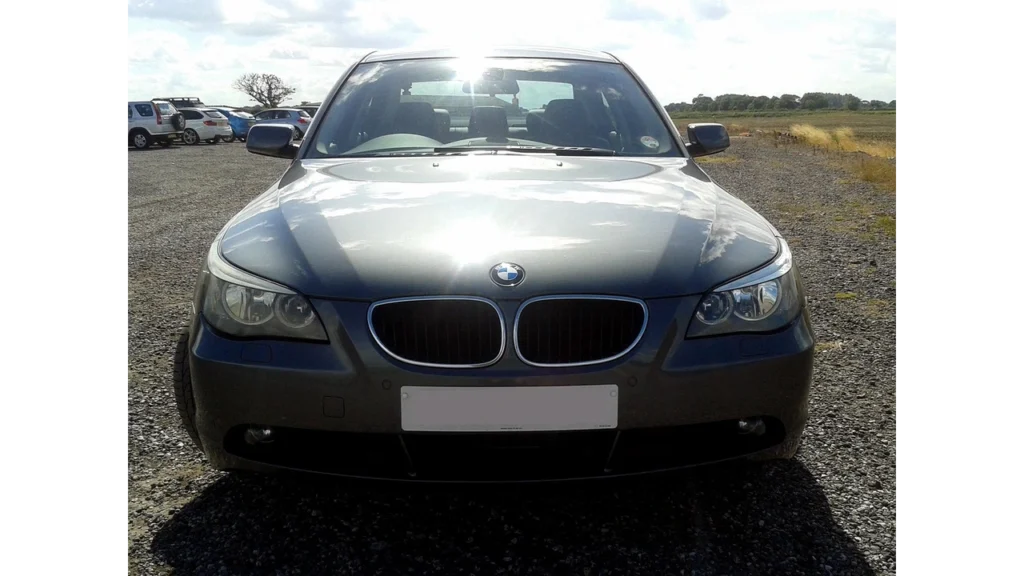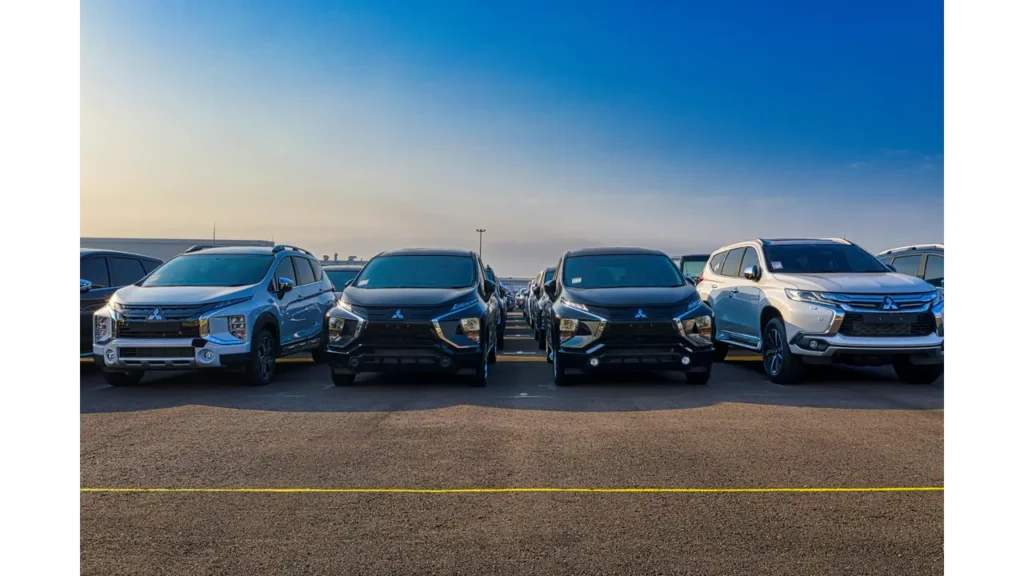Introduction
Import demand in Oman continues to rise as buyers chase specific trims, lower mileage, or better-condition vehicles from nearby markets. Bringing a used car into Oman is not a single step but a chain of predicates: selecting a compliant vehicle age, proving origin, shipping to an Omani port, clearing customs with the correct valuation, and completing traffic registration after inspection. Each predicate connects to distinct entities: Oman Customs for valuation and duty, VAT at 5 percent on importation, the Royal Oman Police for roadworthiness and registration, and logistics partners for roll-on/roll-off or container shipping. Sentiment in the market favors predictability; importers value clear costs, zero document gaps, and fast clearance.
A structured path reduces friction. Start with an age-limit check against Oman’s criteria, then assemble the document set that proves lawful ownership and clean history: commercial invoice, export certificate, bill of lading, and certificate of origin. Shipping selection impacts risk and timeline, while insurance choices determine exposure from port of loading to port release. After customs, inspection confirms safety and legal conformity. Sandan Industrial City functions as a specialized cluster for automotive trade, workshops, and logistics coordination and support importers seeking integrated services and resale pathways once the vehicle lands.
Key Takeaways / TLDR
- Import feasibility hinges on age compliance, clean provenance, and complete documentation.
- Landing cost equals CIF value plus customs duty and VAT; port, agency, and handling charges add to the final bill.
- Post-clearance inspection and registration determine when the car can legally enter road use.
- Sandan Industrial City offers concentrated automotive services that streamline clearance-to-resale workflows.
Table of Contents
Age Limits for Importing Used Cars into Oman
Age thresholds act as the first gate in the import journey. Passenger vehicles typically face a maximum age window from manufacture date; compliance is tested at entry using chassis data and official certificates. Exceptions can exist for classic or antique vehicles that meet heritage criteria, often defined by a significantly higher age threshold and subject to special approval and road-use limitations. Commercial vehicles, trucks, and motorcycles may follow separate limits that reflect safety and environmental priorities, so the category assigned to the vehicle determines which rule applies.
Verification relies on primary records. Customs and traffic authorities assess the model year and build date using the manufacturer record, the export certificate, and VIN decoding. When a vehicle’s documentation is inconsistent, the stricter interpretation usually prevails, which can lead to rejection or re-export at significant cost. Attempting to bypass age rules with altered paperwork risks seizure, penalties, or permanent denial of entry.
Edge scenarios merit careful handling. A car manufactured late in a calendar year may present a narrower compliance margin by the time it arrives at port; shipping schedules and transshipment delays can tip a vehicle across the age line if planning is tight. Vehicles heavily modified after first registration can trigger additional inspection queries, especially where structural or emissions-related changes are involved. For fleet units or previously leased cars, provenance and mileage alone do not override the age threshold; the manufacture date remains the governing attribute.
Classic imports stand apart. Where heritage approvals are possible, eligibility often depends on originality, condition, and intended use. Insurance, parts availability, and emissions testing still matter at registration, even when age exceptions apply. Before booking freight, importers commonly run a VIN-based precheck and align shipping dates with the cutoff window. Sandan Industrial City’s clustered workshops and inspection-ready facilities reduce cycle time once the car lands, helping importers move from port release to road-legal status with fewer handoffs.
Customs Duties and VAT on Imported Used Cars
Landing cost in Oman follows a clear valuation logic anchored in CIF: cost, insurance, and freight to the Omani port. Customs duty is typically assessed on the CIF base at the prevailing rate for passenger vehicles. Import VAT at 5 percent applies to the customs value plus duty and any other taxable charges deemed part of the importation. This sequencing matters: VAT compounds on the post-duty amount, not just the declared purchase price. Separate port fees, documentation charges, and agency services add to the cash outlay but may sit outside the customs value depending on timing and scope.
Consider an example in OMR. Suppose purchase cost is 3,800 OMR, ocean freight and marine insurance total 300 OMR, yielding a CIF of 4,100 OMR. If customs duty applies at 5 percent, duty equals 205 OMR. The VAT base becomes 4,305 OMR (CIF plus duty). VAT at 5 percent equals 215.25 OMR. Before local handling, the core tax burden totals 420.25 OMR, to which port handling, storage, delivery order fees, and local transport must be added. For business importers registered for VAT, input tax recovery depends on eligibility and intended taxable use; private importers treat VAT as a final cost.
Accurate documentation underpins valuation. The commercial invoice must reflect true consideration; side payments or off-invoice accessories can trigger uplift if discovered. The bill of lading and insurance certificate establish the freight and risk profile. Currency conversions use official rates in effect at clearance, so exchange volatility can shift the VAT figure even when the ticket price is fixed. Undervaluation increases the risk of reassessment, penalties, and inspection delays, extending storage exposure and demurrage.
Certain pathways may alter duty exposure, such as movements via designated zones or specific reliefs, but eligibility is document-driven and narrow in scope. Where relief is unavailable, planning focuses on controlling CIF inputs: negotiating freight, selecting appropriate insurance coverage, and timing arrivals to avoid weekend or holiday storage. Sandan Industrial City provides proximity to customs brokers, automotive logistics, and post-clearance services allowing importers to compress the interval between duty/VAT payment and retail readiness.
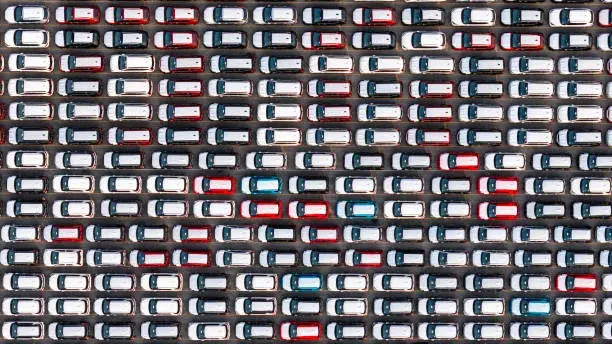
Required Documents for Importing a Used Car
Clearing a used car into Oman hinges on presenting the correct document set, each item linked to a specific predicate in the import chain. Customs verifies ownership and transaction value through the commercial invoice and proof of payment. The bill of lading, issued by the shipping line, anchors the transport leg and defines the vehicle’s route to an Omani port. A certificate of origin validates where the vehicle was manufactured, tying into preferential duty treatment under GCC agreements. The export certificate from the country of origin confirms deregistration, ensuring the same car cannot legally remain registered in two places at once.
Identity documents connect the car to its importer. For residents, a valid resident card and passport establish legal standing. For businesses, commercial registration papers, tax certificates, and power of attorney for brokers may be required. Marine insurance policies must be declared to capture the CIF base correctly, since freight and insurance form part of customs valuation. A customs declaration form links all these documents, creating the legal record of entry.
Each missing or inconsistent record raises friction. An incomplete invoice, discrepancies in VIN numbers, or a missing export certificate can result in storage charges while issues are resolved. Customs officers often cross-check VIN against multiple documents; mismatches trigger inspections or rejection. Translation requirements also matter; documents issued abroad may need certified Arabic translations before acceptance.
Private individuals importing single vehicles should prepare the same dossier as professional dealers. Attempting to shortcut with informal paperwork risks refusal or re-export. Digital platforms at Oman Customs increasingly support pre-clearance uploads, reducing bottlenecks at port release. Professional clusters such as Sandan Industrial City provide customs brokerage, document preparation, and inspection support, allowing importers to resolve issues faster and avoid unnecessary delays. Their integrated workshops and automotive services create continuity from paperwork clearance to physical inspection and eventual resale.
Shipping Methods and Ports of Entry
Transporting a used car to Oman typically relies on two primary shipping methods: roll-on/roll-off (RoRo) or containerized freight. RoRo ships are purpose-built for vehicles, allowing cars to be driven on at the origin port and offloaded at arrival. This option often costs less and simplifies handling, but exposes vehicles to environmental elements and increases risk for minor transit damage. Containerized shipping protects the vehicle inside a sealed unit, offering better security for high-value or classic cars, though costs rise significantly. Space availability also varies, with container slots at times subject to global freight cycles.
Oman’s ports create different entry experiences. Sohar, strategically located near the UAE border, handles a large share of car imports with efficient customs links. Salalah serves southern routes and is favored for shipments from Asia and East Africa. Muttrah Port in Muscat remains relevant for certain consignments but increasingly directs flows toward Sohar and Salalah due to capacity and infrastructure upgrades. Selecting a port depends on shipment origin, cost optimization, and the importer’s location within Oman.
Marine insurance is strongly advised, with policies covering loss, theft, or damage during ocean transit. Premiums typically align with the vehicle’s declared value, freight risk, and port handling environment. Comprehensive coverage mitigates disputes and facilitates CIF valuation for customs. Transit times vary by origin: shipments from Dubai or Jebel Ali can arrive in days, while consignments from Europe may take four to six weeks depending on schedules.
Handling after arrival includes port fees, unloading, storage, and delivery orders from shipping agents. Daily storage charges can accrue quickly if customs or documents are incomplete. Efficient coordination reduces exposure to demurrage. Sandan Industrial City’s logistical ecosystem provides linkages to port agents, transporters, and clearance specialists, shortening the cycle between discharge and road registration. Many importers align delivery schedules to transfer vehicles directly from port release to Sandan facilities, minimizing redundant moves and accelerating road-readiness.
Vehicle Inspection and Registration after Import
Once customs has released a vehicle, the next stage involves compliance with Oman’s road safety and registration framework. The Royal Oman Police (ROP) and the Directorate General of Traffic oversee inspection and licensing. Roadworthiness checks confirm that imported cars meet safety and emissions standards, with inspectors evaluating brakes, suspension, lights, emissions output, and overall condition. Vehicles that fail to meet baseline requirements may require repairs before re-inspection, delaying registration.
Registration predicates begin with VIN verification to confirm the car matches customs documentation. Insurance must be secured before registration, typically third-party coverage at minimum. Registration then yields Omani plates, officially permitting road use. Fees for inspection, registration, and plates add to the total import cost but are essential steps in legalizing the car.
Common rejection reasons include excessive emissions, unsafe modifications, or structural issues. Cars previously involved in severe accidents abroad may fail inspection even if cosmetically repaired. Left-hand drive vehicles are generally permitted, but unusual conversions may face additional scrutiny. Documentation gaps, such as missing inspection certificates from origin or unverifiable VIN histories, also slow approval.
Timeframes vary; well-prepared cases may complete inspection and registration within days, while problem cases can linger for weeks. Importers handling fleets often coordinate bulk inspections, while individuals must attend scheduled appointments. Delays in securing insurance or resolving technical failures extend storage costs and limit resale timelines. Facilities at Sandan Industrial City streamline this process, offering repair workshops, inspection-prep services, and direct connections to licensing offices. This proximity reduces downtime between port clearance and market readiness, positioning Sandan as a hub for both compliance and resale transition in Oman’s automotive market.
How Sandan Industrial City Supports Car Importers
Oman’s vehicle import ecosystem gains structure and efficiency through Sandan Industrial City, an automotive hub designed to support both private buyers and professional dealers. The cluster combines workshops, showrooms, customs support, and logistics providers in one location, making it a focal point for importers who want to reduce handoffs and accelerate road readiness. The presence of specialized car markets inside Sandan creates a natural outlet for resale once the vehicle clears customs, turning a complex import process into a streamlined supply chain.
Key support services include customs brokerage and document preparation. Importers often face challenges with incomplete or misaligned paperwork; Sandan-based agencies provide direct assistance in collating invoices, bills of lading, export certificates, and translations. Integrated workshops prepare vehicles for Royal Oman Police inspections, handling emissions checks, safety repairs, and compliance upgrades before registration. This minimizes the risk of rejection during roadworthiness tests.
Sandan also operates as a logistics hub. Its location and infrastructure make it an efficient link between Oman’s ports and the final buyer. Vehicles can move directly from port release to Sandan facilities for inspection, servicing, and eventual resale, cutting down on costly storage and unnecessary transportation. Insurance providers, financial institutions, and aftermarket service companies present on-site further expand options for importers to finalize all requirements in one place.
For buyers seeking specific models from abroad, Sandan functions as a reliable retail environment. Imported cars brought into its automotive marketplace benefit from quality checks, service records, and visible compliance with Oman’s regulatory framework. For dealers, Sandan provides not only space but credibility, associating imported vehicles with a recognized industrial city designed for structured trade. More information on its services is available through its dedicated resources at Sandan Services.
Common Mistakes and How to Avoid Them
Car importation is vulnerable to pitfalls that add costs and delays if overlooked. The most common mistake is attempting to bring in a car that exceeds the age limit. Customs enforcement is strict; cars over seven years for passenger vehicles are usually rejected, and exceptions require special approvals that few importers secure. Misunderstanding this rule leads to costly re-export or scrapping.
Another recurring error is incomplete documentation. Missing export certificates, invoices without VIN numbers, or inconsistent certificates of origin delay clearance. Even small clerical inconsistencies, such as mismatched manufacture dates across documents, trigger manual checks and prolong port storage. Translation issues also arise when documents from origin countries are not certified in Arabic, creating further delays.
Cost miscalculations also affect importers. Some underestimate the combined burden of customs duty, VAT, and handling fees. While CIF calculations provide a base, hidden costs like storage, demurrage, delivery orders, and insurance shortfalls inflate the final figure. Importers who only plan around ticket price and freight are often surprised by the cumulative effect of these charges.
Technical issues can also block progress. Modified vehicles with altered emissions systems, non-standard body kits, or poor structural repairs abroad may fail roadworthiness inspections. Left-hand drive imports are accepted in Oman, but unusual steering conversions or models without local parts support face registration risks.
Avoiding these mistakes requires forward planning. Checking vehicle age against Oman’s regulations before booking freight, verifying document consistency, budgeting for all customs-linked charges, and pre-inspection abroad reduce risks. Using professional services available in hubs such as Sandan Industrial City strengthens compliance by centralizing brokerage, inspection prep, and insurance in one location. With each entity connected and verified before port arrival, importers minimize delays, storage charges, and the risk of outright rejection.
FAQs
Can non-residents import cars into Oman?
Non-residents can ship cars into Oman but face added scrutiny at registration. Residency permits or commercial partnerships are usually needed to finalize licensing.
How long does customs clearance take?
Clearance can take as little as two to three days if documents are in order, but incomplete paperwork can extend the process to several weeks, with storage charges accumulating daily.
Is insurance mandatory before customs release?
Marine insurance covers the shipping leg, but road insurance must be secured before the car can be registered. Third-party coverage is the minimum legal requirement.
What happens if the documents are incomplete?
Customs places the car in bonded storage until gaps are resolved. Prolonged delays may trigger re-export or auction by authorities if compliance cannot be achieved.
Are left-hand drive cars allowed in Oman?
Yes, left-hand drive vehicles are generally permitted, though they must still pass roadworthiness inspections and meet emission standards.
Can classic cars older than seven years be imported?
Yes, but they require special approval as antique or heritage vehicles. Registration may impose restrictions on use, and insurance costs are higher.
Conclusion
Importing a used car into Oman is a structured journey that connects several entities: customs, taxation, inspection, and registration. Age limits form the first barrier, ensuring only vehicles that meet safety and environmental thresholds enter the market. Customs duties and VAT define the financial outlay, while document completeness and accurate valuation prevent delays and unexpected charges. Shipping choices and port selection influence cost, transit time, and risk exposure. Once in Oman, passing roadworthiness inspection and securing registration formalize the vehicle’s legal presence on the road.
Mistakes often stem from overlooking details: exceeding age limits, incomplete documentation, or underestimating the layered costs. Those who approach the process systematically, with careful planning and full awareness of customs requirements, reduce both delays and financial surprises.
Sandan Industrial City stands out as a vital hub for this process, offering an integrated ecosystem that spans customs brokerage, workshops, logistics coordination, and a thriving automotive marketplace. Its facilities and services compress timelines between port clearance and market readiness, supporting both individual importers and professional dealers. With reliable preparation and the right support, importing a used car into Oman can become a predictable, compliant, and rewarding process.

